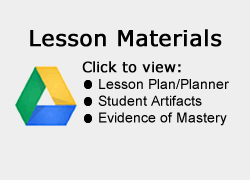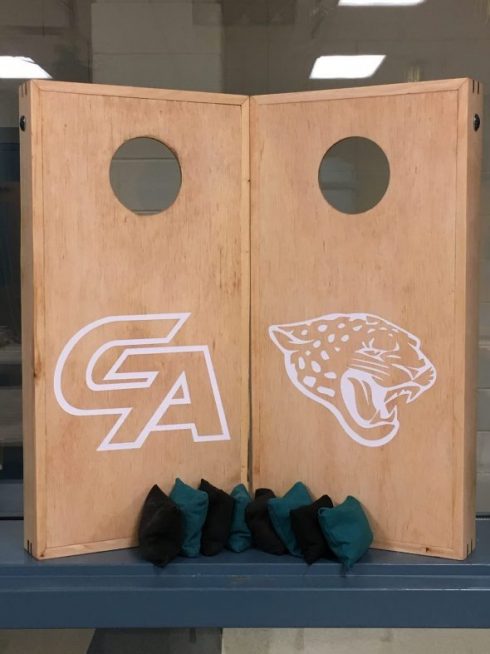Teacher(s) Name: Mr. Ferris, Mr. Stacy, Mr. Dearhart, and Mr. Edwards
School: Glen Allen HS
Grade Level(s): Grade 9,Grade 10,Grade 11,Grade 12
Content Area(s): Earth Science, CTE
Lesson Summary
Two teachers and two TSTs lead student teams to research, design, test, and build an Augmented Reality Sandbox Station. This learning station projects topographical overlays upon a mass of sand to show water levels and terrain. A motion sensor allows these overlays to change depending on the sand level, creating a fully interactive, three dimensional topographical map within the sandbox.
The teachers facilitate small groups of technology and earth science students in the research process by visiting a neighboring high school, contacting college research teams, and collecting information on the software and hardware needed to use the sandbox. Student teams use technical drawing programs to draft blueprints for the sandbox and receive critique upon their design from the teachers. The design must meet building-specific parameters including door width, mobility, and weight requirements. Students use the school’s wood shop to construct the sandbox.
Upon completion of construction, the teachers have students brainstorm instructional applications for the learning station. These include the use of the Sandbox in Earth Science, World History, Visual Art, and Literature lessons. Students designed lesson plans leveraging the sandbox’s functions, and shared these lessons with the school’s faculty.
The Augmented Reality Sandbox was developed by the UC Davis W.M. Keck Center for Active Visualization in the Earth Sciences (KeckCAVES, http://www.keckcaves.org), supported by the National Science Foundation under Grant No. DRL 1114663.
For more information, please visit https://arsandbox.ucdavis.edu.
TIPC Ratings
Research & Information Fluency
Rating:Ideal – Explanation: The Teachers: models research strategies through the use of the UC Davis building protocol while also encouraging students to obtain and synthesize information on newer builds or work from other building teams. The lesson design presents a real world challenge that necessitates the synthesis of multiple information sources. These tasks are fomatively assessed through the success or failure of the build.
The Students: assemble information about the build and its hardware and software. They also must gather information to incorporate in their multi-disciplinary lesson plans. They display their research through the physical building of the learning station.
Communication & Collaboration
Rating: Ideal – Explanation: The Teachers: model different communication methods through collaboration with other instructors and build teams at Appomattox Regional Governor’s School, NC State University, and University of California at Davis. The challenge designed by these instructors asks student to work together, both with other students in building and with other build teams, to find the best design. The communication is both meaningful and authentic because it facilitates a final working build.
The Students: select their own communication tools- in this case most communication was done through Google Drive and in face-to-face meetings. They also chose to e-mail other build teams. They divided the work among themselves, mostly in this case using a democratic form with equal roles that address problems in real time. They reflected on these roles at the end of the project through interviews and 2.0 design recommendations.
Critical Thinking & Problem Solving
Rating: Not observed – Explanation: The Teacher: solves problems alongside students and helps to facilitate and promote critical thought through interactions both in person and digitally. They support students during the problem solving, electing to question the design more than directly guide it. The task is authentic in that it meet an instructional need at the school and creates an actual product to be used in instruction.
The Students: generate their own questions as to which design is the best and what elements need to be considered. They have to justify their decisions during blue-printing and construction, and then must explain their lesson plan designs to the facilitating teachers before sharing these lesson plans with other faculty. They engage in real world problem solving by addressing authentic obstacles in budgeting, purchasing, design, construction, and instructional implementation.
Creativity & Innovation
Rating: Not observed – Explanation: Teachers: model risk taking and craftsmanship through their choice of this project, purchasing of building materials, and knowledge of construction and lesson planning. They show students how to think creatively, while allowing students to guide the actual decision making. They designed this opportunity to synthesize all the research, solve a real problem, and collaborate creatively with one another to achieve the goal of building one of the first AR sandboxes in secondary schools.
Students: created meaningful and usable work through creation of the station and the lesson plans accompanying the Sandbox. They use knowledge of existing builds and their own successes and failures along the way to create a unique learning station tailored to the needs of the school. They take risks during purchasing, building, and construction as any one decision may impact the utility and functionality of the station. They reflect on this process afterwards and make recommendations for future design teams.





